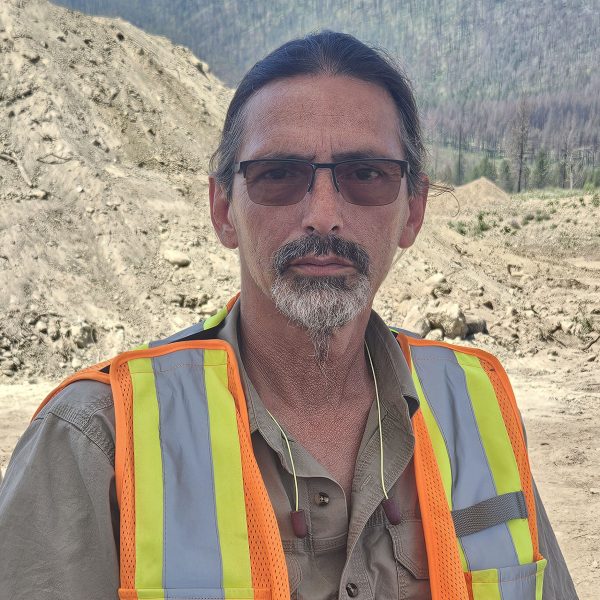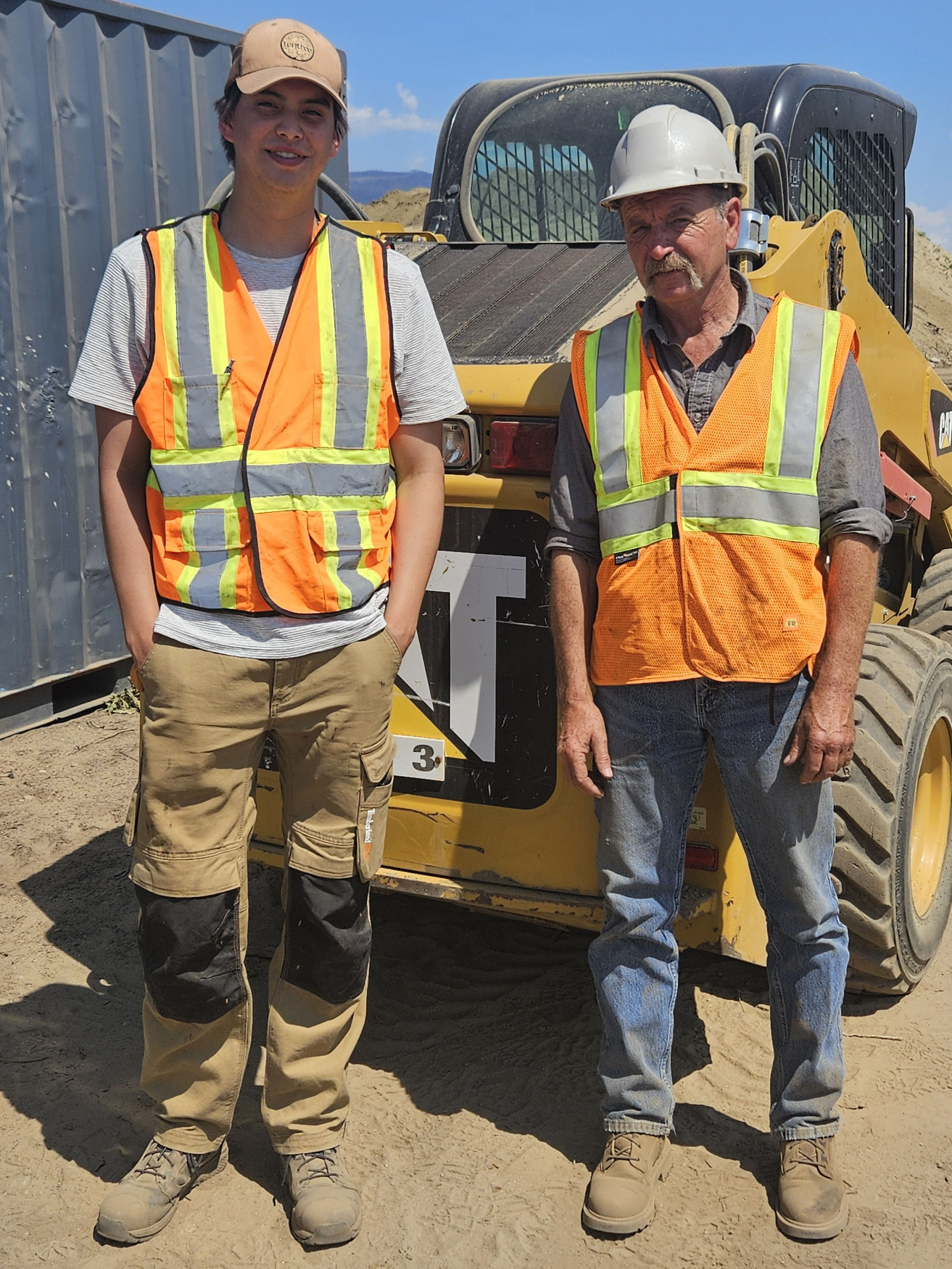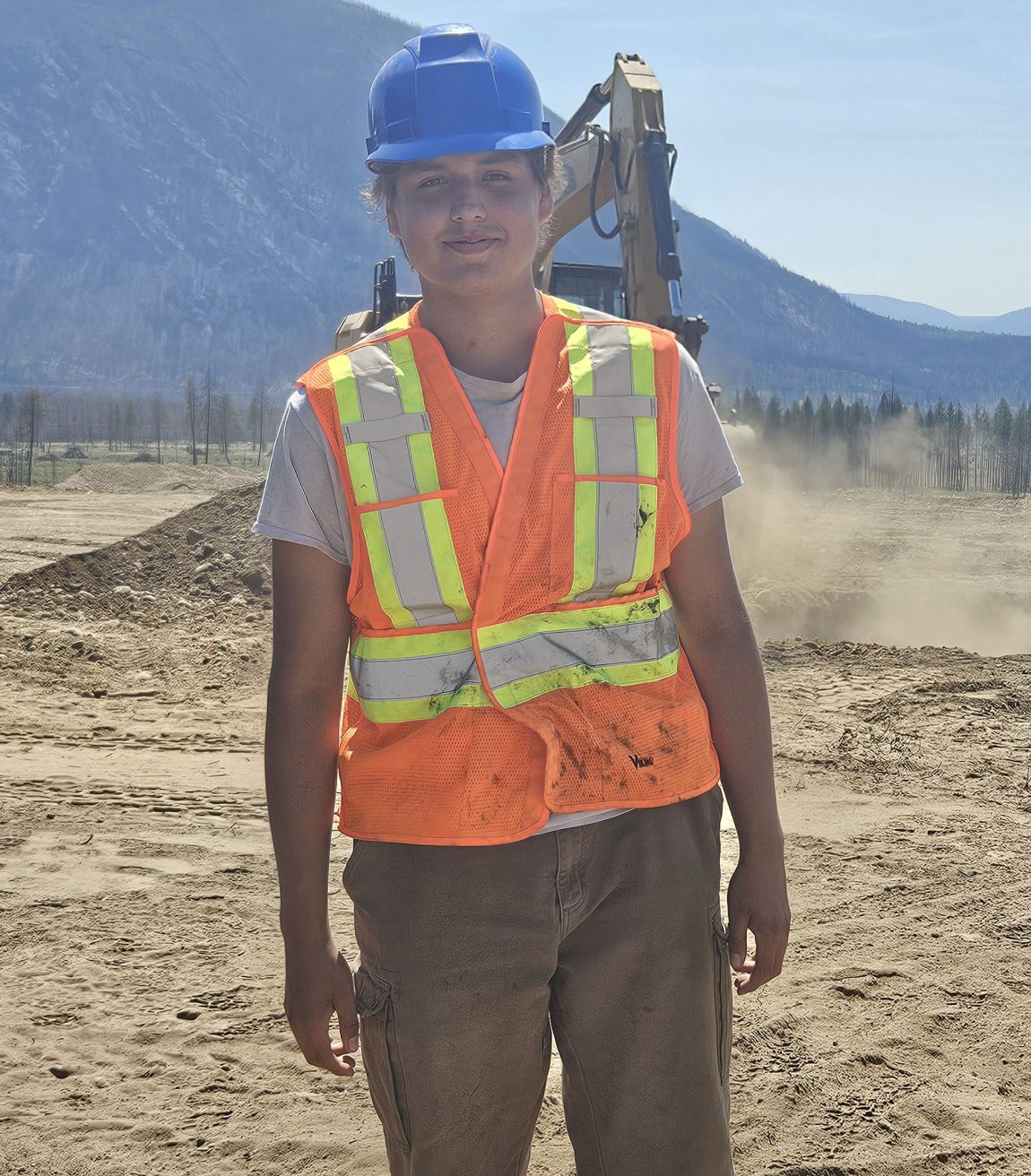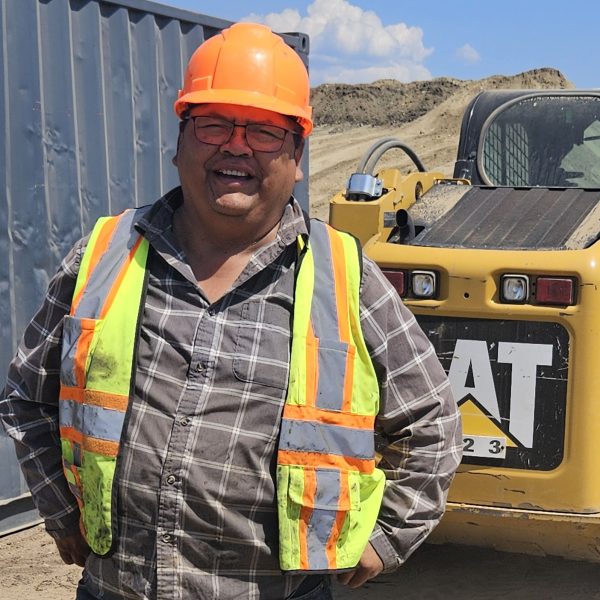By Kim Van Haren
Last summer’s raging wildfires devastated many communities across BC, including those in the Shuswap. Families fled the Bush Creek East wildfire, not knowing if they’d have a home to return to. Skwlāx te Secwepemcúl̓ecw (Little Shuswap Lake Band) member Shayne Hunt was one of those affected, watching his world upend in a matter of moments.

HEO student Shayne Hunt
“(The fire) came up behind us, down the mountain and then across the river,” says Hunt. “The sky was black, and all I heard was screaming.”
Hunt and his family evacuated the area, leaving almost everything behind. The losses were many, including Hunt’s home, which was destroyed by the blaze.
“The only thing that really strikes hard is the stuff that I can’t replace, including cultural artifacts,” he says.
With strength, resilience and much-needed support, community members are looking ahead, rebuilding what’s been lost.
And for Hunt, who’s a student in the Heavy Equipment Operator (HEO) program with Thompson Rivers University (TRU), the opportunity to make a difference matters.
Strong partnerships

Left to right: HEO student Garett Jules and trades instructor Robert (Bob) Ryl
Thirteen Indigenous students are in this cohort of the HEO program, including Hunt. They are learning to drive bulldozers, loaders, excavators, rock trucks, skid steers and compactors, gaining hands-on experience and equipment knowledge to earn their Skilled Trades BC HEO Certificate of Qualification.
At the same time, the students play a crucial role in preparing for the rebuild of the Skwlāx te Secwepemcúl̓ecw (SteS) community.
“The program prepares them to have the practical skills they need,” says TRU Trades instructor Robert (Bob) Ryl.
The 11-week training program is a partnership among the SteS Education Department, TRU’s School of Trades and Technology, Skilled Trades BC, the Indigenous Skills and Employment Training Program and the Aboriginal Training and Employment Centre.
“The work that students have been undertaking also plays a vital role in laying the foundation for the community’s future rebuilding efforts after the devastation they have faced,” says SteS Education Manager Tammy Thomas.
Opportunities for growth
Since May, the students – hailing from Adams Lake, Ts’kw’aylaxw First Nation (Pavillion), Skeetchestn, Tkʼemlúps te Secwépemc, Neskonlith, Skwlāx te Secwepemcúl̓ecw and Samson Cree Nation – have been developing their skills on site, working in the esker (sand and gravel) area of the community, located off Squilax-Anglemont Road in Chase.
“This hands-on experience is invaluable as it allows them to hone their abilities in a practical setting,” says Thomas.

HEO student Calvin Napoose-Buffalo
Students are also helping with a mitigation project aimed at removing countless fire-damaged trees.
“This involvement not only helps in the physical cleanup and preparation of the land, but also instills a sense of giving back to the community,” adds Thomas.
Standing proud
When Adams Lake Band member and Secwepemctsín language teacher Garett Jules applied for the HEO program, he wanted to try something new while helping SteS community members rebuild.
“It’s a community I’m familiar with and I want to work with those helping in any way,” he says. “And working close to home is a good start.”
Calvin Napoose-Buffalo, a member of the Neskonlith Band and Samson Cree Nation, couldn’t imagine his luck when he found out about the HEO program.

HEO student Hank Anthony
“It was like little me, playing with excavator toys,” he says, laughing. “You don’t really get opportunities like this. It’s making dreams come true.”
Napoose-Buffalo, who graduated from high school in 2023, appreciates the support he’s received from mentors around him, including Ryl.
“We’re constantly learning, and they teach us how to do it well,” adds Napoose-Buffalo.
Sixty-four-year-old Adams Lake Band member Hank Anthony, an alum of the Nicola Valley Institute of Technology, is glad he’s doing the program and proud to be part of the community rebuild.
“I enjoy the hands-on experience and seeing tangible results the most,” he says. “And rebuilding a community is deeply fulfilling and humbling.”

